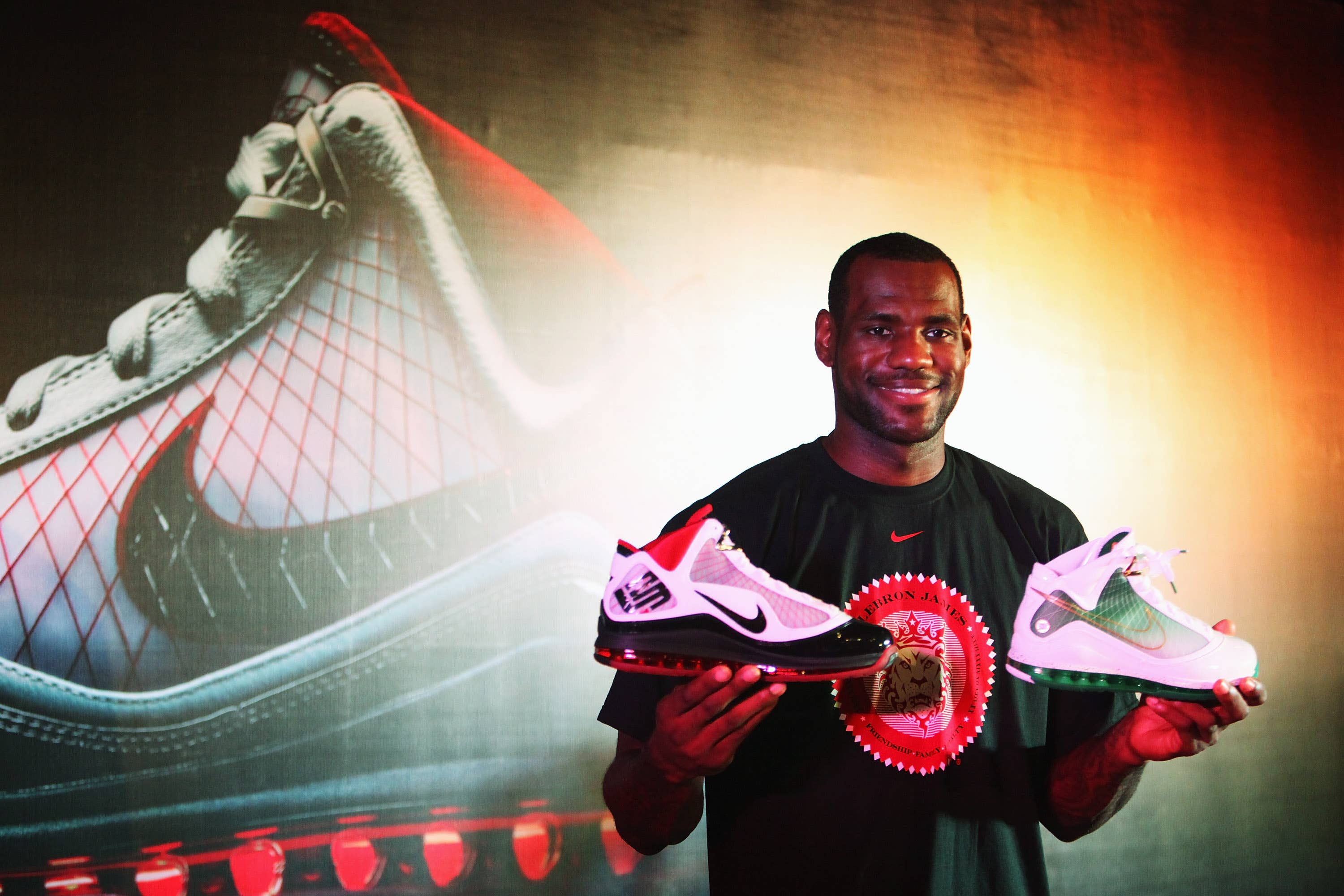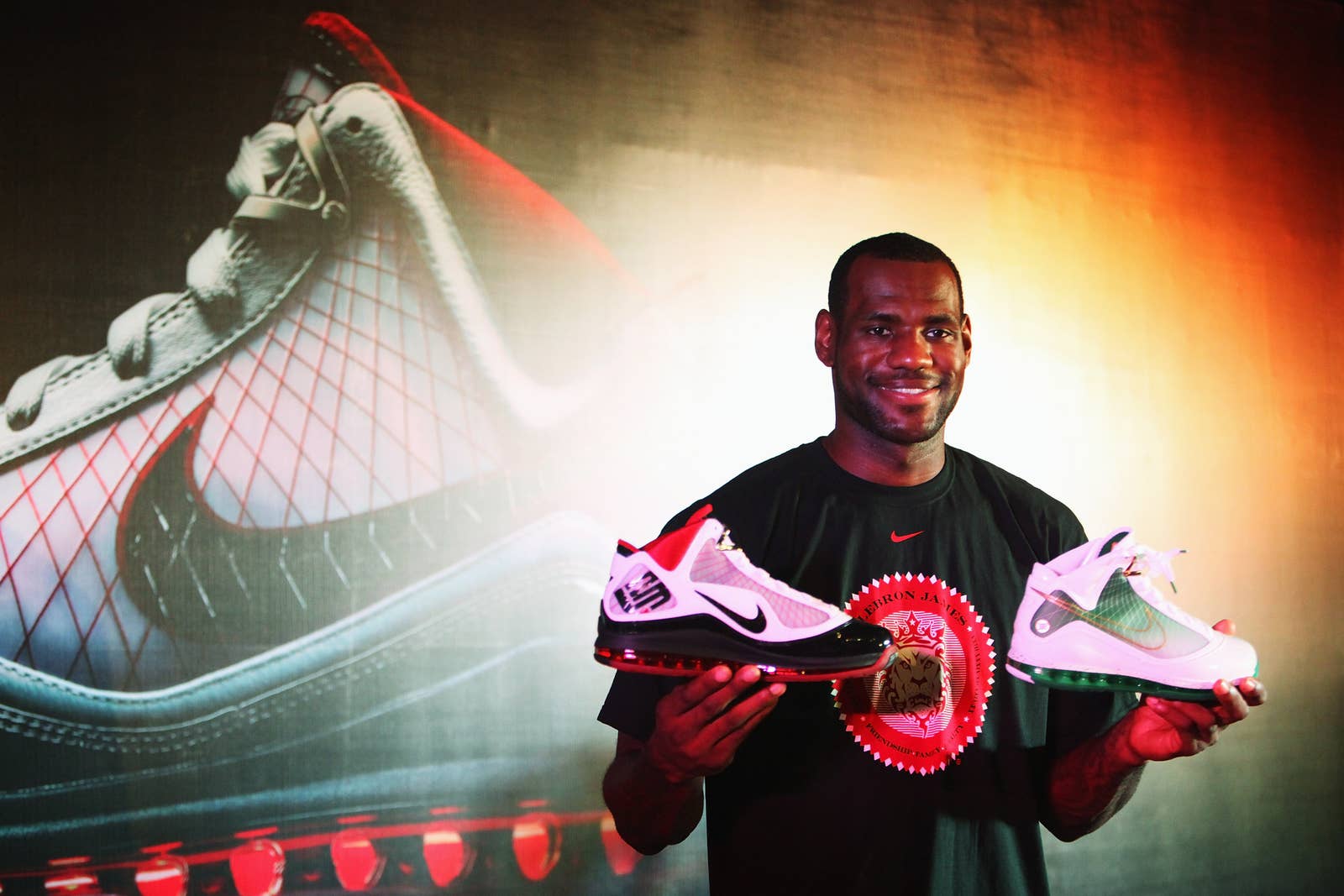
When LeBron James announced his intention to forgo college and enter the 2003 NBA Draft, no one was surprised. His high school games were the first at that level to be televised on ESPN, and he’d graced the cover of Sports Illustrated as a junior with a headline auguring a messianic arrival: “The Chosen One.” The anticipation wasn’t just relegated to fans and the media, either. Basketball’s two titans, Nike and Adidas, engaged in a bidding war that no player before or since has come close to matching. Not even Michael Jordan.
But based off where the basketball sneaker industry is headed, LeBron isn’t just the first high school player to inspire a Travolta-and-Cage-esque faceoff between the preeminent basketball brands. He could also be the last real signature athlete.
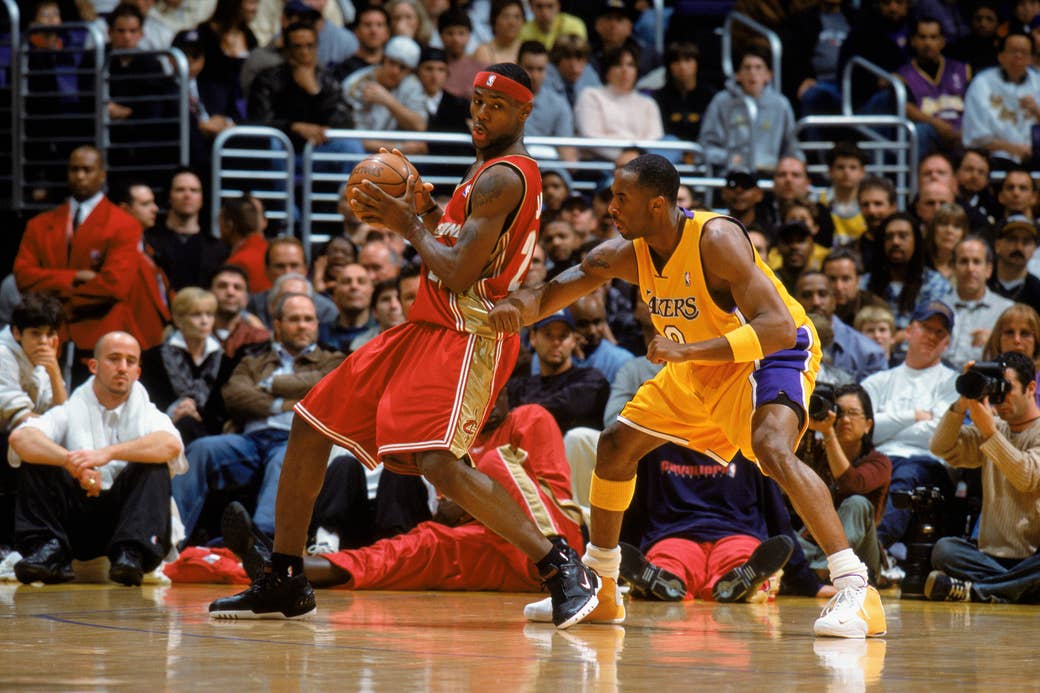
It was exactly 15 years ago that James signed a record seven-year, $90 million deal with Nike. (He has since inked a reported lifetime, billion-dollar contract). This was before he had played a single second in the NBA or even been drafted No. 1 overall by his home-state Cleveland Cavaliers––a bit of kismet for Dan Gilbert, who purchased the team less than two years later. But just like it could have been Detroit who got the No. 1 pick in the 2003 Draft Lottery, it could have just as easily been Adidas who signed James when he turned pro.
“If he signs [to Adidas], the whole world changes,” sneaker executive Sonny Vaccaro said in ESPN’s 2015 30 for 30 documentary, Sole Man, in regards to Adidas failing to heed his advice on what to offer LeBron. In hindsight, that’s not just marketing bluster and embellishment. He continues, “It was the first time the aggressive recruiting of a potential athlete was evident between two companies.”
Like he’d done with many top athletes before, Vaccaro had discovered James earlier than most. After flying to see LeBron play some pickup games in Oakland the summer before his sophomore year of high school, Vaccaro knew within 10 minutes that the hype was real. He later told James and his mom, Gloria, that they should expect to sign for $100 million. “It was a statement of fact in terms of where their minds should be,” Vaccaro says. “That was an NBA contract, not a shoe company number.”
But Adidas failed to follow the advice of their sneaker whisperer, offering substantially less than the $100 million guarantee their own employee valued James at. So Vaccaro’s former bosses at Nike, Phil Knight and George Raveling, ended up landing LeBron instead.
Nike soon released an ad lampooning the impossibly high burden placed on James after he went No. 1 in the draft. However, James really was worth the media glare. Vaccaro proved prophetic, just like he’d been with Michael Jordan, Kobe Bryant, and Tracy McGrady. LeBron went on to win Rookie of the Year in 2004, and by the next season––despite the lack of team success––outlets were already proffering headlines asking if he was the “best ever” before he was legally allowed to buy alcohol.
During LeBron’s rapid ascension up the NBA’s hierarchy of stardom, Nike wasted little time beginning his signature line. It started with the Zoom Air. Then it was the LeBron II, with an added strap and double stacked Zoom Air cushioning. The LeBron II was indestructible, that was the sentiment of a “Chamber of Fear” announcement proclaiming that the King’s sneakers might be as imposing as his on-court game.
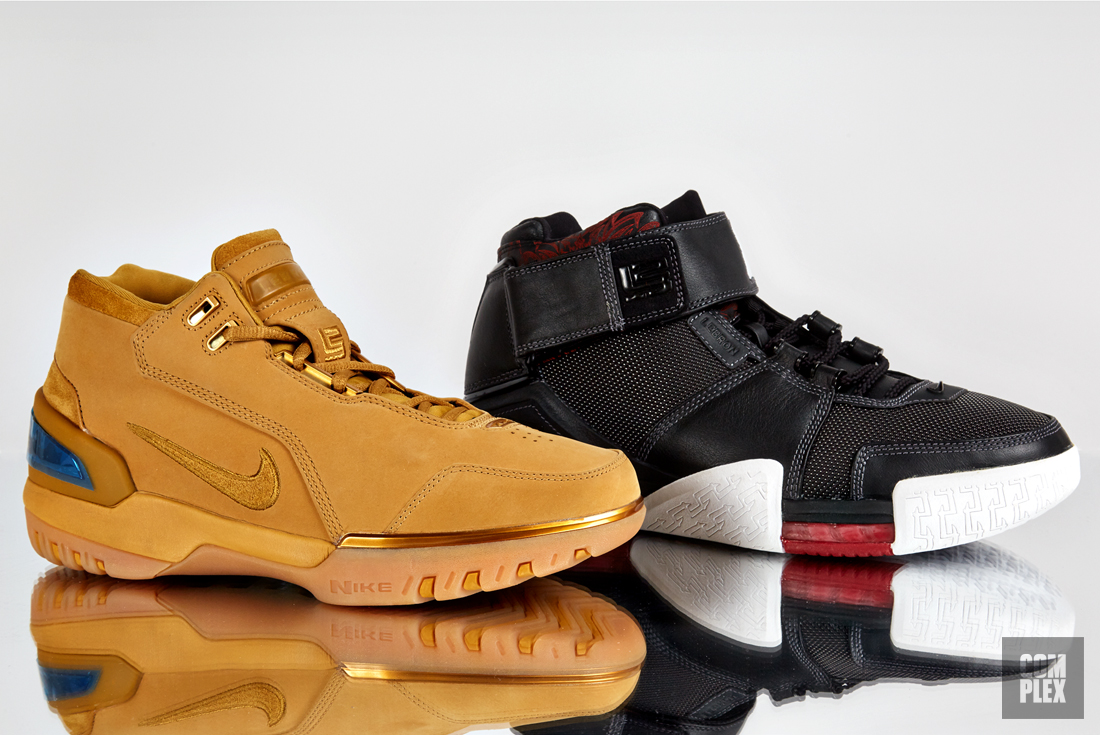
The LeBron II is a personal favorite of James’ long-time Nike designer, Jason Petrie. While Nike’s design director Ken Link was creating 2-6 in the line, “I was at Nike Basketball the whole time,” Petrie tells Complex, “picking up tidbits the whole way, which is probably why he elected to have me take over the line.” Beginning with the LeBron 7, Petrie became the lead on every shoe in the line, including this past October’s LeBron 15.
Petrie’s time designing for LeBron coincided with the All-Star’s first real setback, a tragic fall almost Euripidean in scope. LeBron’s now infamous Decision to “take [his] talents” to South Beach, turned him into a villain for most. In the wake of his heavily-favored Miami Heat losing to the Dallas Mavericks in the NBA Finals, James saw his popularity with the public hit its nadir in the summer of 2011. This period ran parallel with his most pivotal time as a Nike signature athlete. After the Petrie-helmed 7 introduced Nike’s cutting edge Flywire and Air Max tech for the first time, the LeBron 8 would change the game and elevate the line to a place few celebrity endorsers have reached. It was also the iteration James wore during his first season in Miami and his low point in the Finals.
Themed colorways—with intricate back stories, like the 8’s “Pre-Heat” (aka “South Beach”), released earlier in October of 2010—redefined what brands were willing to do with a sneaker. It transcended basketball, and the teal or turquoise mix with pink rippled out into the world well beyond the courts. South Beach became a fashion and footwear ethos, and James was the progenitor. However, similar to his move to Miami, it wasn’t simply saying yes to the design. “LeBron had to approve that color,” Petrie says. “And at the time nobody really knew what was going to happen with him moving cities. He had to be willing to embrace that whole South Beach aesthetic. Looking back now, it seems like an easy layup, but at the time it was kind of like, ‘Whoa, I can’t believe you guys are gonna launch a teal sneaker with pink on it.’”
The courage to try something truly different, even when his popularity was at its most fraught, is what separates James from his signature sneaker peers. “At first, it always leads with a challenge from him,” Petrie says before paraphrasing LeBron: “‘You guys make me feel uncomfortable.’”
Unlike the greatest sneaker salesman in history, LeBron isn’t happy with the status quo. He actively wants to be pushed to new places, like with his move to Miami, and his subsequent move back to Cleveland four years later; and the multimedia “Rise” campaign Nike ran after The Decision turned James into persona non grata among Cleveland diehards and basketball fans in general.
“Not every athlete is like that,” says Petrie. “We always followed his lead.”
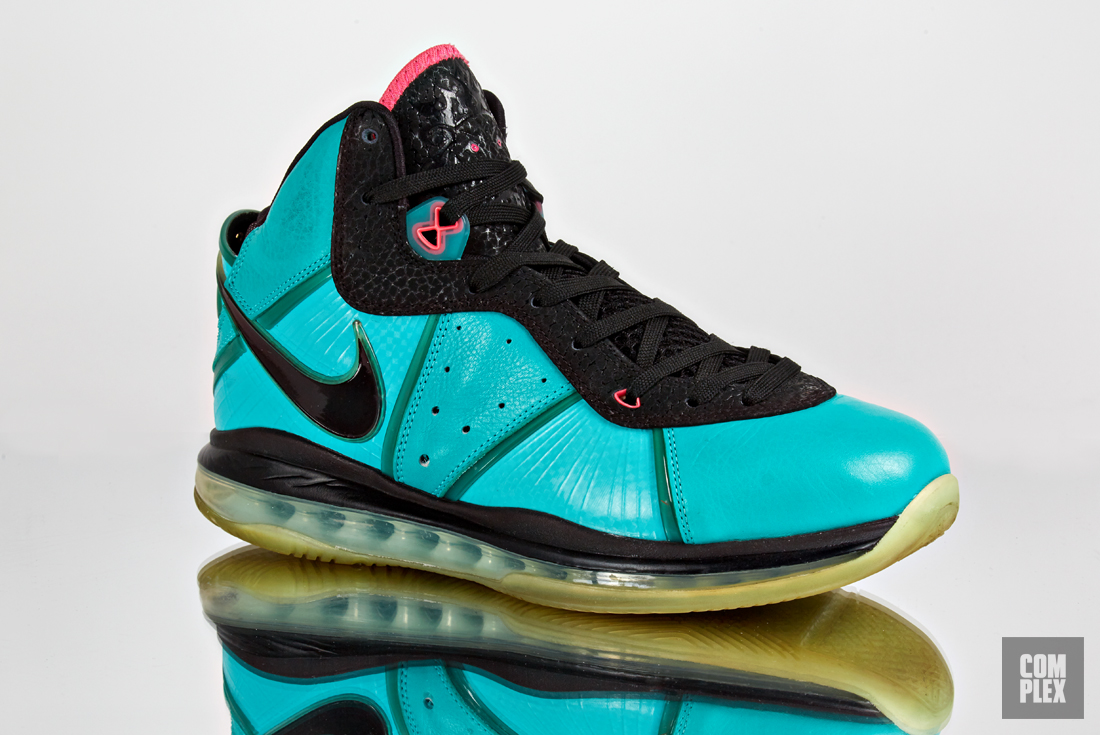
LeBron’s willingness to push boundaries isn’t relegated to the court, the fashion house, or the boardroom. It translates to other areas, too. By simply being himself, James inadvertently burnished his reputation more than the titles and commercials could.
“One of the hallmarks of LeBron’s time in the spotlight has really been his stand on political and social issues,” says Matt Powell, the senior sports industry advisor at the NPD Group. “So many other athletes try to avoid that, and I think that in today’s marketplace the consumer actually welcomes athletes, celebrities, taking political stands.”
In a bit of an ironic twist, it’s LeBron’s comfort speaking out on social issues that’s only added to his popularity. While the veracity behind Michael Jordan’s infamous line about Republicans buying sneakers is still up for debate, what isn’t is James’ willingness to dive head-first into often rocky, always polarizing, political terrain.
Like when he and his Heat teammates all wore hoodies to bring awareness to the 2012 shooting death of Trayvon Martin. Or, when he––along with Kevin Garnett, Derrick Rose, and other pro athletes––wore an “I can’t breathe” T-shirt before a game in New York to call attention to Eric Garner’s death after being placed in an illegal chokehold by local police officers. Or, when he shared how sickened he was by the police shootings of Philando Castile and Alton Sterling. He even campaigned for Hillary Clinton in Ohio on the eve of the 2016 election.
LeBron’s bold stance on complicated socio-political topics sheds the old, muted mold of Michael Jordan. But instead of driving a wedge through his consumer base, LeBron’s outspokenness has made him even more popular with the people advertisers care the most about.
“The millennial and the Gen Z consumer have said in study after study they wanna know where the celebrities that they like stand on issues,” says Powell. “Then, if those values don’t align with their worldview, they’ll take their business elsewhere. So, it isn’t that they want transparency, they want alignment.”
LeBron aligns. Even though Steph Curry briefly passed LeBron in shoe sales at the zenith of his Under Armour popularity, James has led the league in shoe sales the last two seasons, and he’s currently second to the cherubic Warriors guard in jersey sales.
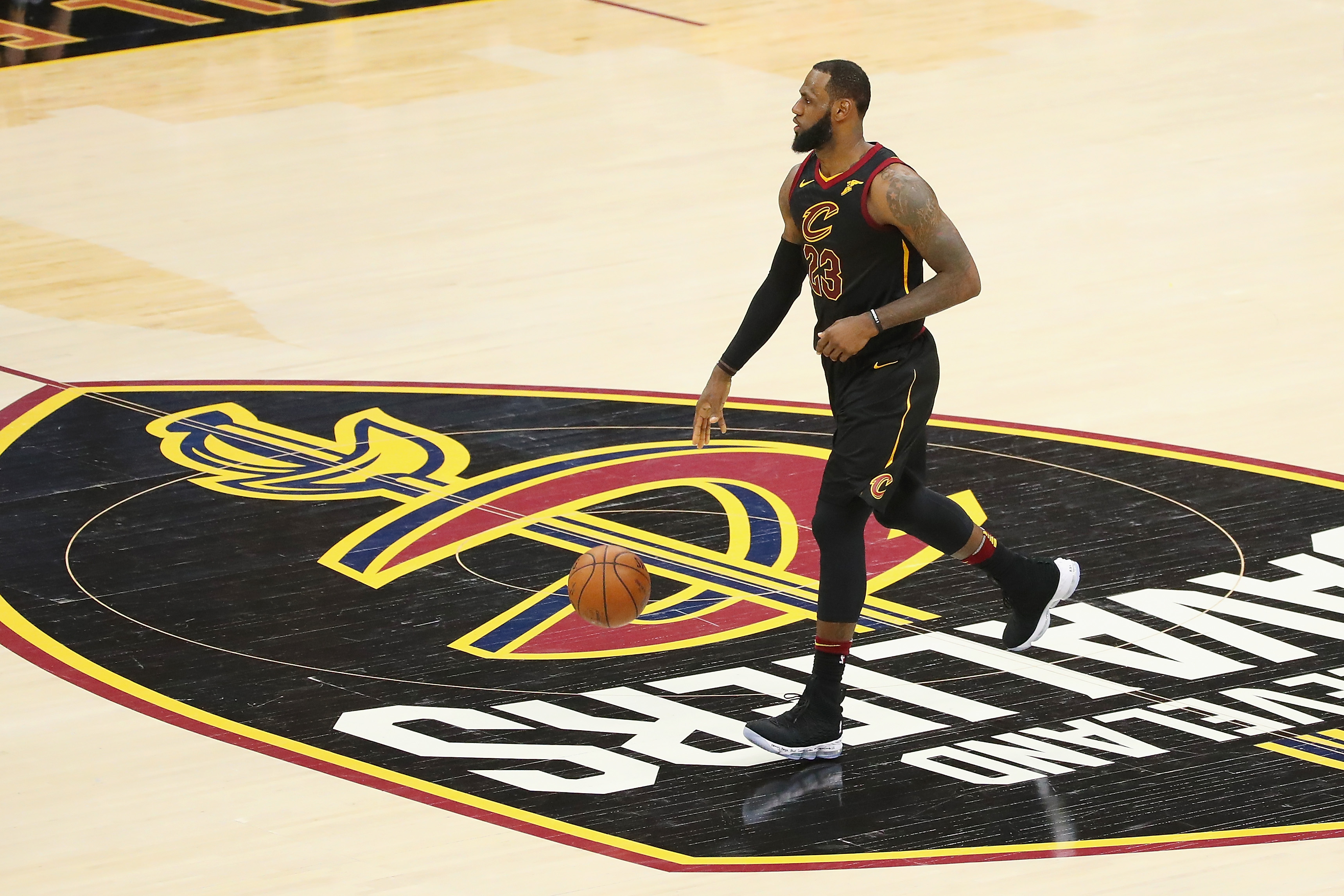
Except, if all this is true, why is LeBron the last signature athlete?
“One of the really interesting phenomenons that’s happening right now is that basketball shoes are not fashionable,” Powell explains. “They’re not being worn on the street.” Increasingly, they’re just used to play basketball, and that’s cut into everyone’s market share, include LeBron. Even Kyrie Irving, who hasn’t seen a drop in his sneaker sales, is doomed for a dip. “Kyrie will get caught up in this shift as well, much like we saw with Curry,” says Powell. “Curry was in ascension for about two years, and then the fashion headwinds really started to have an impact.”
That changing consumer landscape is a death knell for future signature stars. “If you agree with me that the importance of signature athletes [is] now in decline, it would make [LeBron] the last great one,” Powell continues. “There’s no one that’s going to rival him for the kind of sales he got.”
Not to mention, that kids are more excited to get a pair of sneakers from the likes of Kanye West, Pharrell Williams, or Virgil Abloh than they are from the latest and greatest stars on the hardwood.
Perhaps the clearest indication yet that LeBron could be the last great signature athlete, someone brands offered tens of millions of dollars to before he even threw on an NBA jersey, is what Powell says about LeBron’s only real rival on the basketball court, or on Wall Street: “I’m kind of worried right now that the Jordan thing might be over, in terms of the real heat that it had.”

